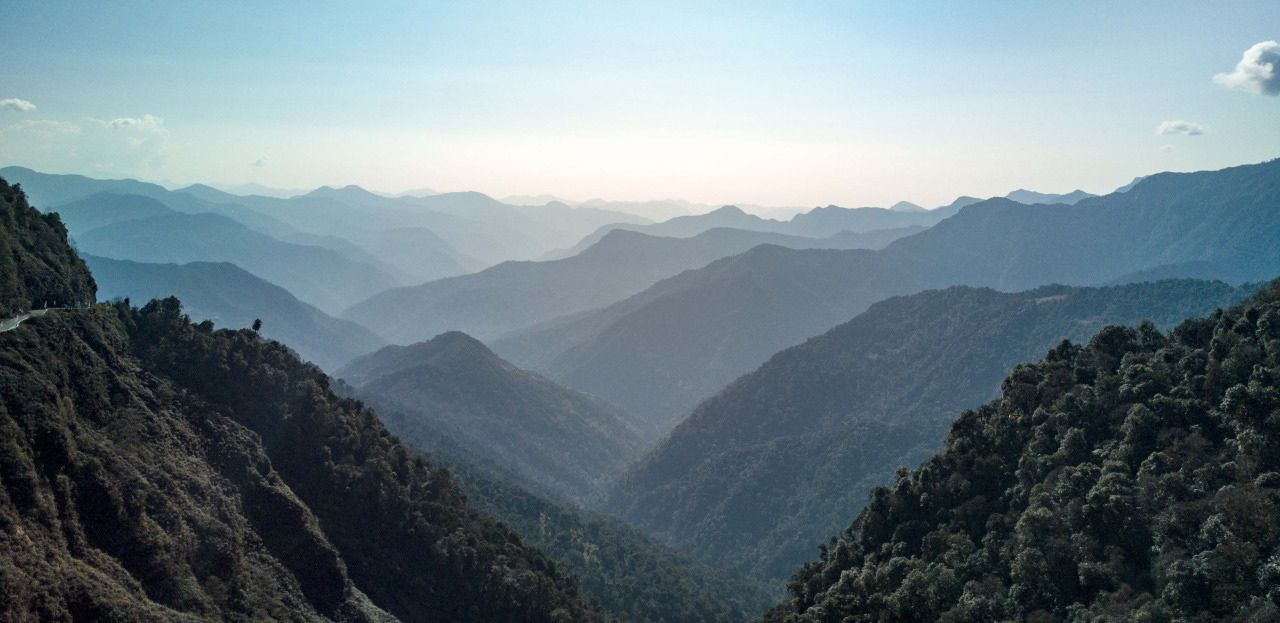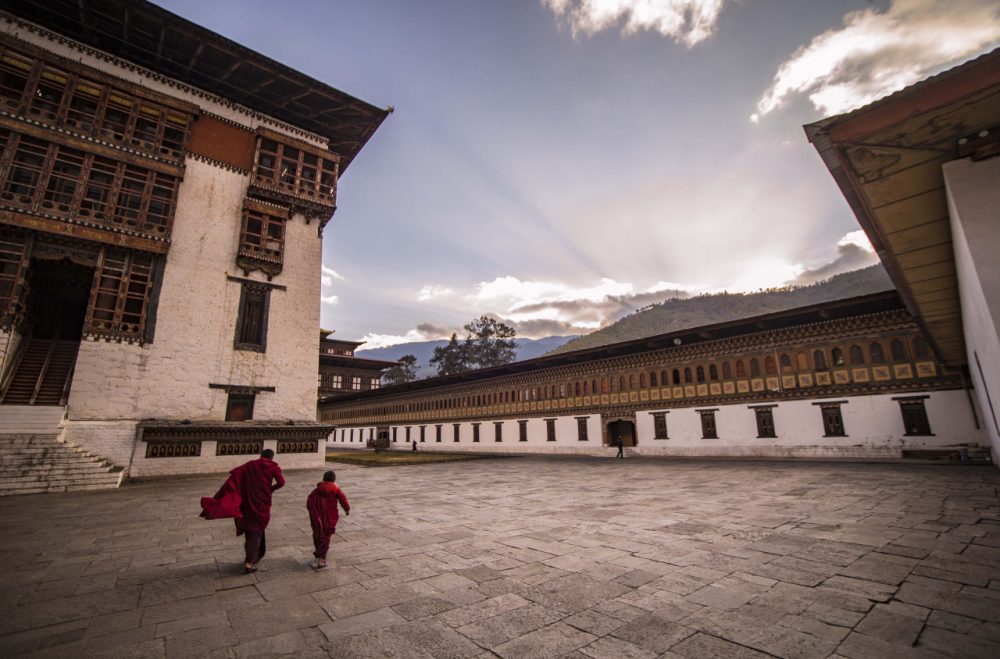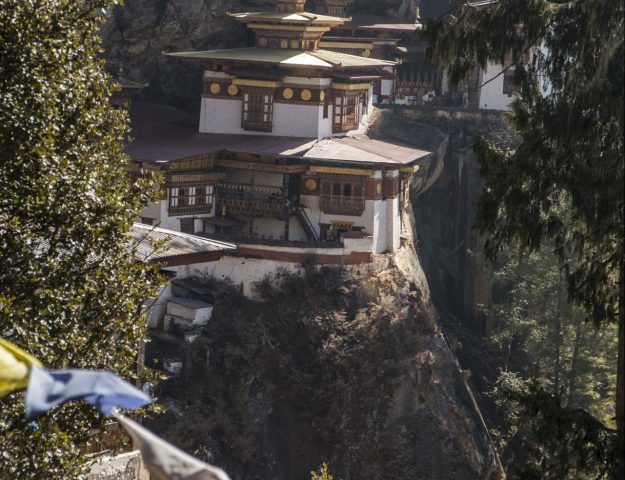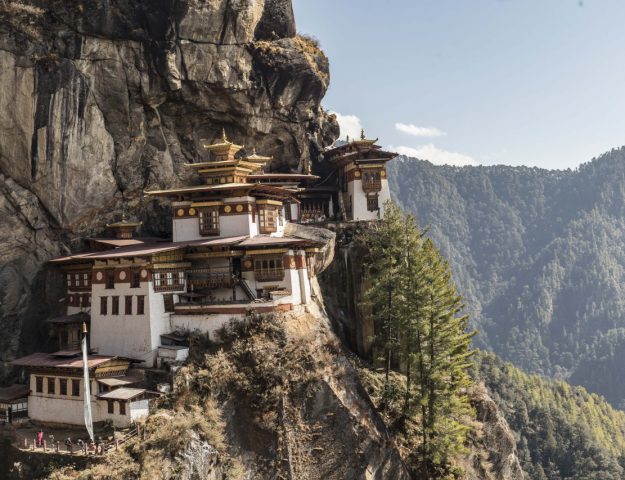The restrictions
If, after seeing all these pictures, you’ve finally made your decision to travel to Bhutan, here are some essential information for making your travel arrangements:
First you need to be aware, that travelling to Bhutan is rather expensive. Not only because you can’t get there directly, but also because Bhutan has a special policy to make you pay a daily minimum for hotel and guide while latter is mandatory for most visitors.
The Bhutanese government is reserved about letting to many visitors in the country. This topic is matter of discussion in Bhutan, but so far you are obliged to have an invitation by “a citizen of some standing” or a volunteer organization. State-controlled tours are possible, Bhutan has deliberately remained closed off to protect old traditions. TV and internet didn’t reach the country before 1999! Due to Bhutanese policy, Bhutan was definitely spared from becoming another stop on the backpacker Banana Pancake Trail in Asia.
With the exception of passport holders from Bangladesh, India and the Maldives, all visitors must travel on a preplanned, prepaid, guided package tour or custom designed travel program arranged by an agreed travel agency.
Starting from Germany we choose Bhutan Travel, a small yet very dedicated travel agency near Munich. We were very happy with this choice, since they’ve made our travel very carefree so I can nothing but recommend them. If you live outside of Germany I’m sure the internet will help you to find other trusted agencies. In the last years private guides from Bhutan acting as travel agent themselves spring up like mushrooms. It’s up to you whether you prefer to book with one directly. The tourism council carries a long list of tour operators but I can help you with a direct contact to trusted people in Bhutan directly.
The bumf
You’ll obtain your mandatory Visa for Bhutan at the border, but of course it’s your agancy that arranges that for you in advance. There is no need to go to an embassy. But you’ll probably need a visa for India or Nepal as well. Latter is easier to get and also a lot cheaper. Those two countries are usually your stepping stone for getting to Bhutan since they are close by and are connected by regular flights to Paro. The alternative is Bangkok which is visa free for many nationalities. It is served by Bhutan’s first private Airline Bhutan Airlines (Tashi Air) and recently state owned Druk Air added a daily connection too. Otherwise they are flights from Dhaka (Bangladesh), Yangoon (Myanmar), and Singapore. We decided to visit Delhi & Agra first, took a flight from Delhi to Gauhati and from there by car to Samdrup Jongkhar where we crossed the border to Bhutan in order to travel the country from east to west. There are two other border crossings: Gelephu & Jaigon-Phuentsholing. This map is giving you an good overview of the main connections.
The price
You’ve probably heard by now, that travelling to Bhutan is not cheap. But that is not fully correct. You have a daily minimum or as it is officially called a “Minimum Daily Package“. This is set by the government to control tourism and protect the environment. It can’t be negotiated. But here’s the thing: The price includes all accommodations, the (excellent) meals, transportation (car & driver), guide and the cultural programs. So all you need to pay in addition is your drinks, souvenirs and the extra tips. I really enjoyed not having to worry about paying the hotel, the restaurants etc. Makes you feel even more like a welcomed visitor or like a king/queen all over the country. An important thing to know: A big chunk of the money from your ‘Daily Package’ also goes towards free education, free healthcare, and poverty alleviation in Bhutan, along with the building of infrastructure. For 2017 it was $65. Once you look at it from that perspective, it isn’t as expensive as it might seem in the first place. Its just a lot of money (well spent). Ok, let’s talk money:
High Season: March, April, May, September, October, and November
- $250 per person per day, for a group of three or more people.
- $280 per person per day, for a group of two people.
- $290 per day for single individuals.
Low Season: January, February, June, July, August, and December
- $200 per person per day, for a group of three or more people.
- $230 per person per day, for a group of two people.
- $240 per day for single individuals.
There are several discounts depending on how long you stay, how many you are. Also for students and of course children.
As mentioned above, you won’t need a bag full of money once in Bhutan. There is ATM service in Bhutan but from my six cards only one got accepted (Lufthansa VISA). Credit cards are not widely accepted but most of the tourist shops do. The Bhutanese currency is called Ngultrum and its value is linked to the Indian Rupee. With the exception of 500 and 2,000 rupees notes, the Indian Rupee can be used as legal tender. You should try to get some small bills, since you might need them for the voluntary (good for your karma though) donations at the countless temples.
The accommodation
Your tour operator will choose your accommodation. Most people assume that they’re stuck with a fixed itinerary and the hotels allocated to them. However, tour companies will in fact accommodate requests in order to keep business. So it might be worth it to check the proposed hotels with tripadvisor or similar pages. But keep in mind, that in some regions you only have a low density of hotels. If you are adventurous enough and want to exchange comfort for authenticity ask for home stays! We’ve enjoyed that part, despite having to sleep on a mattress at -5 C° with a toilet on the other side of the house. Most of the standard hotels are rather simple, if you are the luxury type, heaven is the limit – at least concerning prices: The amazing Amankora in Punakha will cost you 1,550$ for a double room.
Development in Bhutan
Bhutan has dramatically changed in the last thirty years. Sustainable growth isn’t easy at that pace, some are not happy of this journey and the side effects. On the other hand no one has the right to deny the Bhutanese and especially the youth the sometimes dubitable blessings of progress (or quantum jump in some places). Saying that, you should focus on the east of the country if you want to see and feel the traditional Bhutan. But be aware: You will spend a large amount of time in your car, since excavators are digging the country over for the renewal of the roads. Since it’s happening all over the country and you only have ONE main road, you won’t be travelling fast. Good thing about that: You have a lot of time looking at magnificent landscapes and you’ll be learning a lot about road construction…
Best time visiting Bhutan
So what’s the best time visiting this unique kingdom?
Let’s start with the climate. It is extremely diverse. This is due to the variations in altitude, as well as the influence of the southwest and northeast monsoons from India. Weather patterns can be divided as follows:
- Late June to late September: southwest monsoon brings heavy rain and high humidity to the southern border region of Bhutan
- Early October to late November: post-monsoon there are bright, sunny days and sometimes early snowfall at higher elevations
- Late November to early March: the northeast monsoon brings gale force winds through high altitude mountain passes, giving Bhutan its name “Drukyul” — meaning Land of the Thunder Dragon. Winter also sets in, with frost throughout much of the country and snowfall often above 3,000 meters. December and January are the coldest months in Bhutan, with overnight temperatures dropping below zero in Paro, Thimphu, and Bumthang. But from a photographers perspective: That is the time when you have crystal clear air, nice skies and the best photo op. Also, your daily package is cheaper and you have much less tourist around you
- Early March to mid April: spring is generally dry and pleasant
- Mid April to late June: summer produces occasional showers and maximum temperatures of around 30 degrees Celsius (86 degrees Fahrenheit)
But climate isn’t the only aspect: Many tourists visit Bhutan to experience the country’s fascinating festivals called tsechu. A comprehensive listing of festival dates for 2017 can be downloaded here from the Tourism Council of Bhutan website. The three most famous are:
- Thimphu Tsechu (September 25-29, 2017): It’s one of the biggest festivals and people travel from all over the country to see it. It takes place at Tashichho Dzong in Thimphu. Days and nights of prayer and rituals are undertaken to invoke the gods before the festival.
- Punakha Drubehen and Tsechu (February 19-27, 2018): At picturesque Punakha Dzong, the Punakha Drubchen hosts a dramatic recreation of the scene from Bhutan’s 17th century battle with the Tibetan army, who came to seize a precious relic.
- Paro Tsechu (March 27-31, 2018): Held every spring at Rinpung Dzong, this is one of the most colorful and significant events. Early in the morning on the last day of the celebration, the monks display a gigantic thangkha painting inside the dzong.
So choose wisely when to go to Bhutan. But don’t wait to long. Progress is transforming Bhutan and its people quickly. The capital Thimpu f.e. is one of the fastest growing cities in Asia and has to deal with a lot of challenges.




